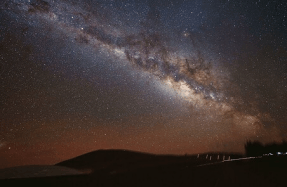RETHINKING BLACK HOLES


Almost every diagram of a black hole highlights two key parts of these behemoth beasts: the singularity (the centre) and event horizon (the perimeter). But there’s a chance some black holes don’t actually look like this. Some black holes may not have an event horizon at all. If they exist, these naked singularities wouldn’t just call every black hole illustration into question, but many of our established notions of the universe, too.
A standard black hole is thought to be the consequence of a large star collapsing in on itself. Once compressed into a point of infinite density, the forces of gravity are so extreme that nothing can escape its pull, not even light. But for something to get in, it still has to get close enough, past the event horizon. “The simplest way to describe them is as a point of no return,” says Maximiliano Isi, a postdoctoral researcher at the Laser Interferometer Gravitational-Wave Observatory (LIGO) Lab at the Massachusetts Institute of Technology (MIT). “It’s
You’re reading a preview, subscribe to read more.
Start your free 30 days





